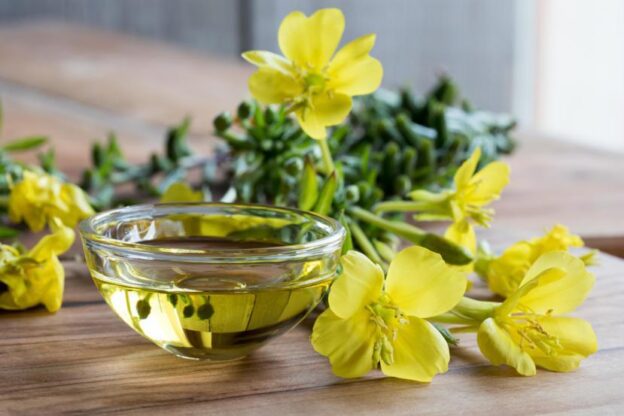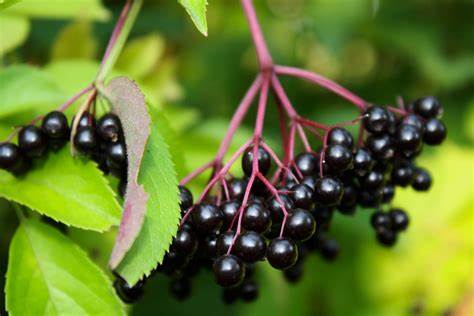As we age, our bodies go through several changes that can affect our overall health. One of the most common issues that people face is joint pain and stiffness. This can be due to a variety of factors such as genetics, injury, or simply wear and tear. However, there is a natural supplement that can help boost joint health and prevent breakdowns. Glucosamine is a compound that is naturally found in the body and is essential for maintaining healthy joints. In this blog post, we will explore the power of glucosamine and how it can help you maintain healthy joints, reduce inflammation, and prevent joint breakdowns. We will also discuss the different types of glucosamine supplements available and how to choose the right one for your needs. If you are looking to improve your joint health and prevent the onset of joint pain and stiffness, then keep reading to discover the power of glucosamine.
Shop Amazon and Save on Glucosamine
1. Introduction to glucosamine and its role in joint health
When it comes to maintaining optimal joint health, one of the key players in the realm of supplements is glucosamine. Glucosamine is a naturally occurring compound found in the body, specifically in the cartilage that cushions our joints. It plays a vital role in the formation and repair of cartilage, making it a crucial component for healthy joints.
As we age, the production of glucosamine in our bodies tends to decline. This can lead to a breakdown in the cartilage, resulting in joint pain, stiffness, and discomfort. Additionally, certain conditions such as osteoarthritis can further exacerbate this decline, making it even more essential to provide our joints with an adequate supply of glucosamine.
Supplementing with glucosamine has shown promising results in promoting joint health and preventing further deterioration. By providing the body with an external source of glucosamine, individuals can help support the repair and maintenance of cartilage, reducing pain and improving overall joint function.
Glucosamine supplements are available in various forms, including capsules, tablets, and even topical creams. They are often combined with other beneficial ingredients such as chondroitin sulfate and MSM (methylsulfonylmethane) to enhance their effectiveness.
It is important to note that while glucosamine can offer significant benefits for joint health, results may vary among individuals. Some people may experience noticeable improvements in a relatively short period, while others may require more time to observe the desired effects. It is always recommended to consult with a healthcare professional before starting any new supplement regimen.
In the following sections of this blog post, we will delve deeper into the specific benefits of glucosamine, explore different types of glucosamine supplements, and provide tips for incorporating them into your daily routine. So, let’s dive in and discover the power of glucosamine in boosting joint health and preventing breakdowns.
2. Understanding the structure and function of joints
In order to truly appreciate the power of glucosamine and its impact on joint health, it is crucial to first understand the intricate structure and the vital functions of our joints.
Joints are the connections between bones that allow movement and flexibility in our bodies. They are comprised of various components that work together seamlessly to facilitate smooth and pain-free motion. The main components of a joint include bones, cartilage, synovial fluid, ligaments, and tendons.
Bones provide the framework and support for our bodies, while cartilage acts as a cushion between the bones, preventing them from rubbing against each other. This cartilage is made up of specialized cells called chondrocytes that produce and maintain a gel-like substance known as the extracellular matrix. This matrix is rich in collagen and proteoglycans, which provide structure, elasticity, and shock absorption to the cartilage.
Synovial fluid is a thick, viscous fluid that fills the joint space and acts as a lubricant, reducing friction between the moving surfaces of the bones. Ligaments are tough bands of connective tissue that hold the bones together, providing stability and preventing excessive movement. Tendons, on the other hand, attach muscles to bones, allowing for coordinated movement.
The structure and function of joints are essential for our overall mobility and well-being. However, factors such as aging, injury, or certain medical conditions can lead to the breakdown of these components, resulting in joint pain, stiffness, and reduced range of motion.
Glucosamine, a naturally occurring compound in our bodies, plays a crucial role in maintaining the health and integrity of our joints. It is a building block for the production of glycosaminoglycans, which are essential components of cartilage and synovial fluid. By providing the necessary building blocks, glucosamine supports the repair and regeneration of damaged cartilage, promoting joint health and reducing the risk of breakdowns.
Understanding the structure and function of joints allows us to appreciate the significance of glucosamine in preserving joint health. By incorporating glucosamine into our daily routine, whether through natural food sources or dietary supplements, we can actively promote the well-being of our joints and enjoy a life of mobility and flexibility.
Shop Amazon and Save on Glucosamine
3. Common causes of joint breakdown and discomfort
Joint breakdown and discomfort can have a significant impact on our daily lives, limiting our mobility and causing constant pain. Understanding the common causes of joint breakdown is crucial in taking proactive measures to prevent such issues and maintain optimal joint health.
One of the leading causes of joint breakdown is age-related wear and tear. As we grow older, the cartilage that cushions our joints begins to naturally deteriorate, resulting in reduced flexibility and increased vulnerability to injuries. This degeneration can lead to conditions such as osteoarthritis, a chronic and degenerative joint disease that affects millions of people worldwide.
Another common cause of joint breakdown is repetitive stress or overuse injuries. Activities that involve repetitive motions, such as running, jumping, or lifting heavy objects, can strain the joints over time, leading to inflammation and damage. Sports enthusiasts, athletes, and individuals with physically demanding jobs are particularly susceptible to this type of joint breakdown.
Obesity also plays a significant role in joint discomfort and breakdown. Excess body weight puts excessive pressure on the joints, especially in weight-bearing areas like the knees and hips. This increased load can accelerate the wear and tear on the joints, leading to pain and reduced mobility.
Furthermore, certain medical conditions can contribute to joint breakdown. Conditions such as rheumatoid arthritis, an autoimmune disorder that causes inflammation in the joints, can result in significant joint damage if left untreated. Other conditions, such as gout or lupus, can also impact joint health and contribute to discomfort and breakdown.
It is essential to recognize these common causes of joint breakdown and discomfort to take appropriate preventive measures. By maintaining a healthy weight, engaging in regular exercise, practicing proper posture and body mechanics, and incorporating joint-supporting supplements like glucosamine into your routine, you can significantly reduce the risk of joint breakdown, alleviate discomfort, and maintain optimal joint health for years to come.
4. How glucosamine supports joint health
Glucosamine, a natural compound found in the body, plays a vital role in supporting joint health and preventing breakdowns. It is a building block for the formation and repair of cartilage, the flexible tissue that cushions the joints.
When we engage in physical activities or experience age-related wear and tear, the cartilage in our joints can become damaged or worn down. This can lead to joint pain, stiffness, and reduced mobility. Glucosamine steps in to promote the production of new cartilage and stimulate the repair process.
One of the key benefits of glucosamine is its ability to stimulate the production of glycosaminoglycans (GAGs), which are essential components of cartilage. GAGs help to maintain the structural integrity of the joint and ensure its smooth functioning. By increasing the production of GAGs, glucosamine helps to replenish and rebuild the cartilage, improving joint health and reducing discomfort.
Glucosamine also possesses anti-inflammatory properties, which can further contribute to joint health. Inflammation is a common response to joint damage or injury, and it can exacerbate pain and swelling. By reducing inflammation, glucosamine helps to alleviate these symptoms and promote a healthier joint environment.
Additionally, glucosamine has been shown to support the lubrication of joints. It helps to stimulate the production of synovial fluid, which acts as a lubricant and shock absorber within the joints. This lubrication is crucial for maintaining smooth joint movement and preventing friction-related damage.
Moreover, glucosamine has been studied for its potential to slow down the progression of osteoarthritis, a degenerative joint disease characterized by cartilage breakdown. By providing the necessary building blocks for cartilage repair, glucosamine may help to preserve joint function and delay further deterioration.
In summary, glucosamine plays a crucial role in supporting joint health by promoting cartilage formation, reducing inflammation, supporting lubrication, and potentially slowing down the progression of joint diseases. Incorporating glucosamine into your daily routine through supplements or natural food sources can be a valuable strategy in boosting joint health and preventing breakdowns.
5. Scientific evidence supporting the benefits of glucosamine
Scientific evidence has long been sought after to validate the benefits of glucosamine in promoting joint health and preventing breakdowns. Over the years, numerous studies have been conducted to examine the effectiveness of this natural compound, and the results have been promising.
One study published in the Journal of the American Medical Association (JAMA) analyzed the effects of glucosamine on patients with osteoarthritis, a common joint disorder. The researchers found that participants who took glucosamine supplements experienced a reduction in pain and improved joint function compared to those who received a placebo. This suggests that glucosamine can play a vital role in managing the symptoms of osteoarthritis and potentially slowing down the progression of the disease.
Additionally, a systematic review published in the journal Arthritis & Rheumatology examined multiple clinical trials and concluded that there is strong evidence supporting the use of glucosamine for treating osteoarthritis. The review highlighted the anti-inflammatory properties of glucosamine, which help reduce joint inflammation and alleviate pain.
Furthermore, research conducted at the University of Maryland Medical Center found that glucosamine may stimulate the production of cartilage, the connective tissue that cushions our joints. This is crucial for maintaining joint health and preventing the breakdown of cartilage, which can lead to conditions like osteoarthritis.
While more research is still needed to fully understand the mechanisms behind glucosamine’s benefits, the existing scientific evidence strongly suggests its positive impact on joint health. Incorporating glucosamine into your daily routine, whether through supplements or natural sources like shellfish and bone broth, may provide significant support for your joints and help prevent future breakdowns.
Remember, it is always advisable to consult with a healthcare professional before starting any new supplement regimen, especially if you have any existing medical conditions or are taking other medications.
Shop Amazon and Save on Glucosamine
6. Different forms of glucosamine supplements and their effectiveness
When it comes to glucosamine supplements, there are various forms available on the market. Each form has its own unique characteristics and effectiveness in promoting joint health and preventing breakdowns.
One of the most common forms of glucosamine is glucosamine sulfate. This form is derived from the shells of shellfish and is known for its high bioavailability. Glucosamine sulfate is easily absorbed by the body, making it an effective option for those looking to support their joint health. Numerous studies have shown its positive effects on reducing joint pain, improving mobility, and slowing down the progression of osteoarthritis.
Another form is glucosamine hydrochloride. This form is also derived from shellfish shells but differs from glucosamine sulfate in terms of its chemical structure. Glucosamine hydrochloride is often used in combination with other joint-supporting ingredients, such as chondroitin sulfate and MSM. While it may not have as much scientific evidence supporting its effectiveness as glucosamine sulfate, some studies suggest that it can still provide benefits for joint health.
N-acetyl glucosamine is another form that is gaining attention for its potential joint health benefits. This form is often used in skincare products due to its ability to promote healthy skin. However, some studies suggest that N-acetyl glucosamine may also have positive effects on joint health by supporting the production of collagen and reducing inflammation.
It’s important to note that the effectiveness of glucosamine supplements may vary from person to person. Factors such as age, overall health, and the severity of joint issues can influence how well an individual responds to a specific form of glucosamine. Consulting with a healthcare professional or a registered dietitian can help you determine which form of glucosamine may be most suitable for your specific needs.
In conclusion, there are different forms of glucosamine supplements available, each with its own potential effectiveness in promoting joint health and preventing breakdowns. Whether you choose glucosamine sulfate, glucosamine hydrochloride, or N-acetyl glucosamine, incorporating these supplements into your daily routine may provide the support your joints need to stay healthy and functional.
7. Recommended dosage and potential side effects
When it comes to taking any dietary supplement, including glucosamine, it is essential to follow the recommended dosage guidelines. The appropriate dosage can vary depending on factors such as age, weight, and the severity of joint issues. It is always best to consult with a healthcare professional or a licensed nutritionist to determine the most suitable dosage for your specific needs.
Typically, the recommended daily dosage of glucosamine ranges from 1,500 to 2,000 milligrams. This can be taken in divided doses or as a single dose, depending on the specific product and instructions provided. It is important to note that consistency is key when taking glucosamine. Results may not be immediate, and it may take several weeks or even months of regular use to experience the full benefits.
While glucosamine is generally considered safe for most individuals, it is crucial to be aware of potential side effects. Common side effects, although rare, may include mild gastrointestinal discomfort such as nausea, diarrhea, or indigestion. These symptoms are usually temporary and subside as the body adjusts to the supplement. However, if any severe or persistent side effects occur, it is advised to discontinue use and seek medical advice.
Additionally, individuals with specific health conditions or taking certain medications should exercise caution when considering glucosamine supplementation. Those with shellfish allergies should avoid glucosamine derived from shellfish sources and opt for a vegetarian or synthetic alternative. It is always recommended to inform your healthcare provider about any supplements you are taking to avoid any potential interactions with medications or underlying health conditions.
Remember, while glucosamine is widely recognized for its potential benefits in supporting joint health and preventing breakdowns, it is essential to approach supplementation responsibly. Following the recommended dosage guidelines and being mindful of potential side effects will help ensure a safe and effective experience, ultimately leading to improved joint health and overall well-being.
8. Other natural remedies and lifestyle changes to support joint health
In addition to incorporating glucosamine into your routine, there are several other natural remedies and lifestyle changes that can further support joint health and prevent breakdowns.
1. Exercise Regularly: Engaging in regular physical activity is crucial for maintaining strong and healthy joints. Low-impact exercises like walking, swimming, and cycling can help improve flexibility, reduce stiffness, and strengthen the muscles surrounding the joints.
2. Maintain a Healthy Weight: Excess weight puts additional strain on the joints, especially weight-bearing ones like the knees and hips. By maintaining a healthy weight, you can alleviate pressure on your joints and reduce the risk of joint deterioration.
3. Follow a Balanced Diet: A well-balanced diet rich in nutrients can play a significant role in promoting joint health. Incorporate foods that are high in omega-3 fatty acids, such as fatty fish, walnuts, and chia seeds, as they possess anti-inflammatory properties that can help reduce joint pain and inflammation.
4. Stay Hydrated: Drinking an adequate amount of water throughout the day is essential for joint health. Water helps keep the cartilage in your joints hydrated, ensuring proper cushioning and lubrication.
5. Get Sufficient Sleep: Quality sleep is crucial for overall health, including joint health. During sleep, your body repairs and rejuvenates tissues, which includes the joints. Aim for 7-9 hours of uninterrupted sleep each night to support optimal joint function.
6. Avoid Prolonged Sitting or Inactivity: Sitting for long periods can lead to stiffness and discomfort in the joints. Incorporate regular movement breaks into your day to keep your joints active and flexible. Stretching exercises can also help relieve joint stiffness and improve range of motion.
7. Manage Stress: Chronic stress can contribute to inflammation and exacerbate joint pain. Incorporate stress management techniques such as meditation, deep breathing exercises, or engaging in hobbies and activities you enjoy to promote overall well-being and support joint health.
Remember, while these natural remedies and lifestyle changes can be beneficial for most individuals, it’s always important to consult with your healthcare provider before making any significant changes to your routine, especially if you have underlying medical conditions or are taking medications.
Shop Amazon and Save on Glucosamine
9. Personal testimonials and success stories
Personal testimonials and success stories can be incredibly powerful in showcasing the effectiveness of glucosamine in boosting joint health and preventing breakdowns. Hearing about real experiences from individuals who have incorporated glucosamine into their daily routine can provide valuable insights and inspire others to take action.
Imagine reading about someone who struggled with chronic joint pain for years but found relief after starting a glucosamine supplement. Their testimonial could detail how they regained their mobility, reduced inflammation, and improved their overall quality of life. These personal stories create a sense of authenticity and credibility, making it easier for readers to relate and trust in the benefits of glucosamine.
Success stories can also highlight specific situations or conditions where glucosamine has made a significant difference. For instance, someone who was an avid runner but had to give up their favorite activity due to knee pain might share how incorporating glucosamine into their routine allowed them to get back on the track and continue pursuing their passion.
Including personal testimonials and success stories in this blog not only helps to strengthen the information provided but also adds a human touch. It allows readers to connect on a deeper level and envision how glucosamine could potentially transform their own lives.
Remember, it’s essential to always ensure that the testimonials are genuine and based on real experiences. This helps build trust and credibility with your audience, making them more likely to consider incorporating glucosamine into their own joint health regimen.
10. Conclusion: Harnessing the power of glucosamine for long-term joint health
In conclusion, harnessing the power of glucosamine can be a game-changer when it comes to promoting long-term joint health and preventing breakdowns. This natural compound has been extensively researched and proven to have numerous benefits for our joints.
By regularly supplementing with glucosamine, you can effectively support the repair and maintenance of cartilage, which acts as a cushion between our bones, preventing them from rubbing against each other. This can significantly reduce joint pain and discomfort, allowing you to maintain an active and fulfilling lifestyle.
Moreover, glucosamine has been shown to have anti-inflammatory properties, helping to reduce swelling and stiffness in the joints. This can be particularly beneficial for those suffering from conditions such as osteoarthritis, where inflammation plays a significant role in joint deterioration.
It is important to note that while glucosamine can be highly effective in promoting joint health, it is not a quick fix. Consistency is key, and long-term use is recommended for optimal results. Additionally, it is always advisable to consult with a healthcare professional before starting any new supplement regimen, especially if you have any underlying health conditions or are taking medication.
Incorporating glucosamine into your daily routine, whether through supplements or natural food sources, can provide you with the support your joints need to stay healthy and strong. Remember, prevention is always better than cure, and by taking proactive steps to care for your joints now, you can enjoy a pain-free and active lifestyle well into the future. So why wait? Start harnessing the power of glucosamine today and take control of your joint health.
We hope you found our blog post on the power of glucosamine informative and insightful. Joint health is crucial for overall well-being, and glucosamine has been shown to play a significant role in boosting joint health and preventing breakdowns. By incorporating glucosamine into your daily routine, whether through supplements or natural food sources, you can take proactive steps towards maintaining strong and healthy joints. Remember to consult with your healthcare provider before making any changes to your diet or supplement regimen. Here’s to healthier, happier joints and a more active lifestyle!
——————————




